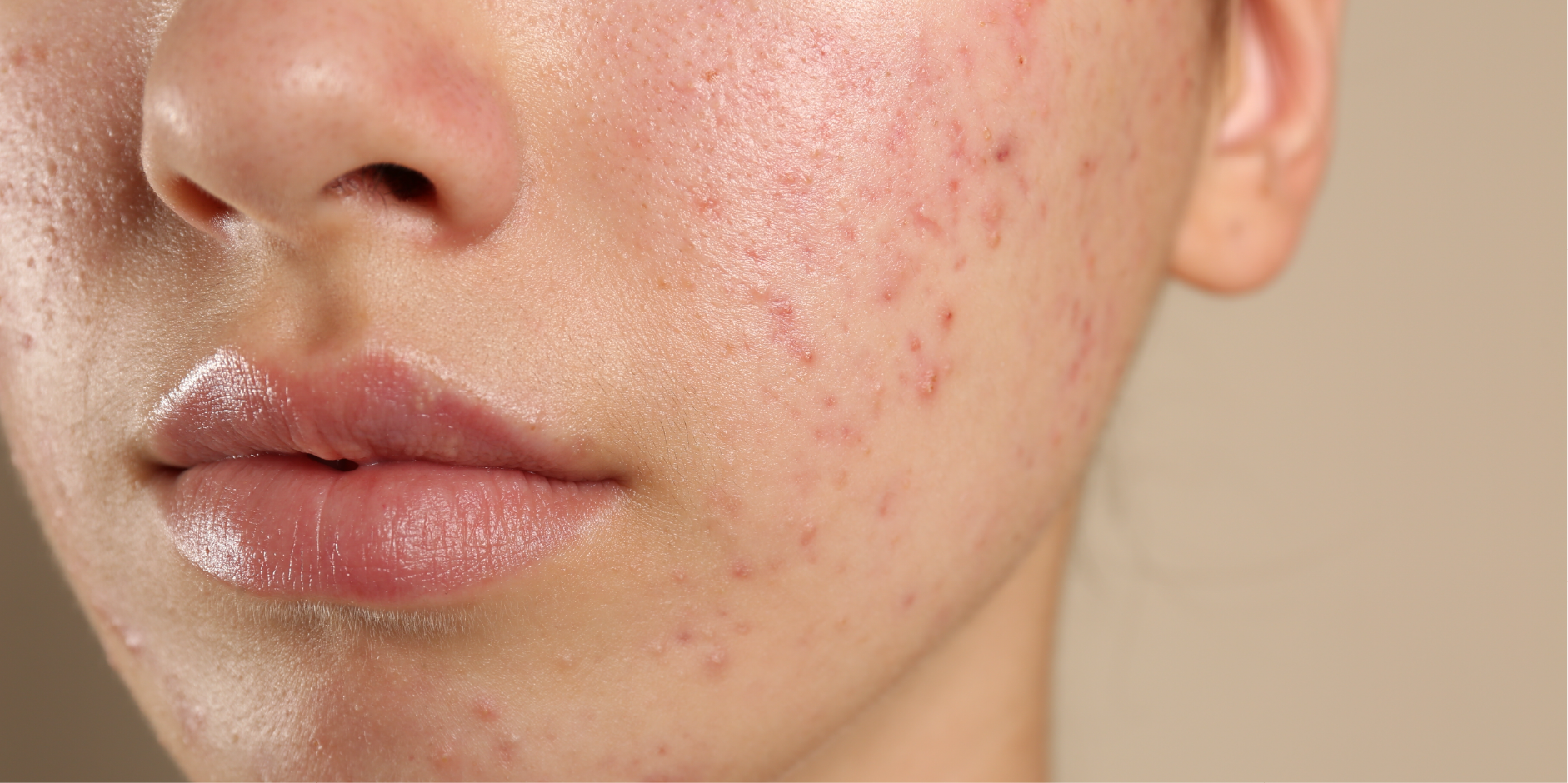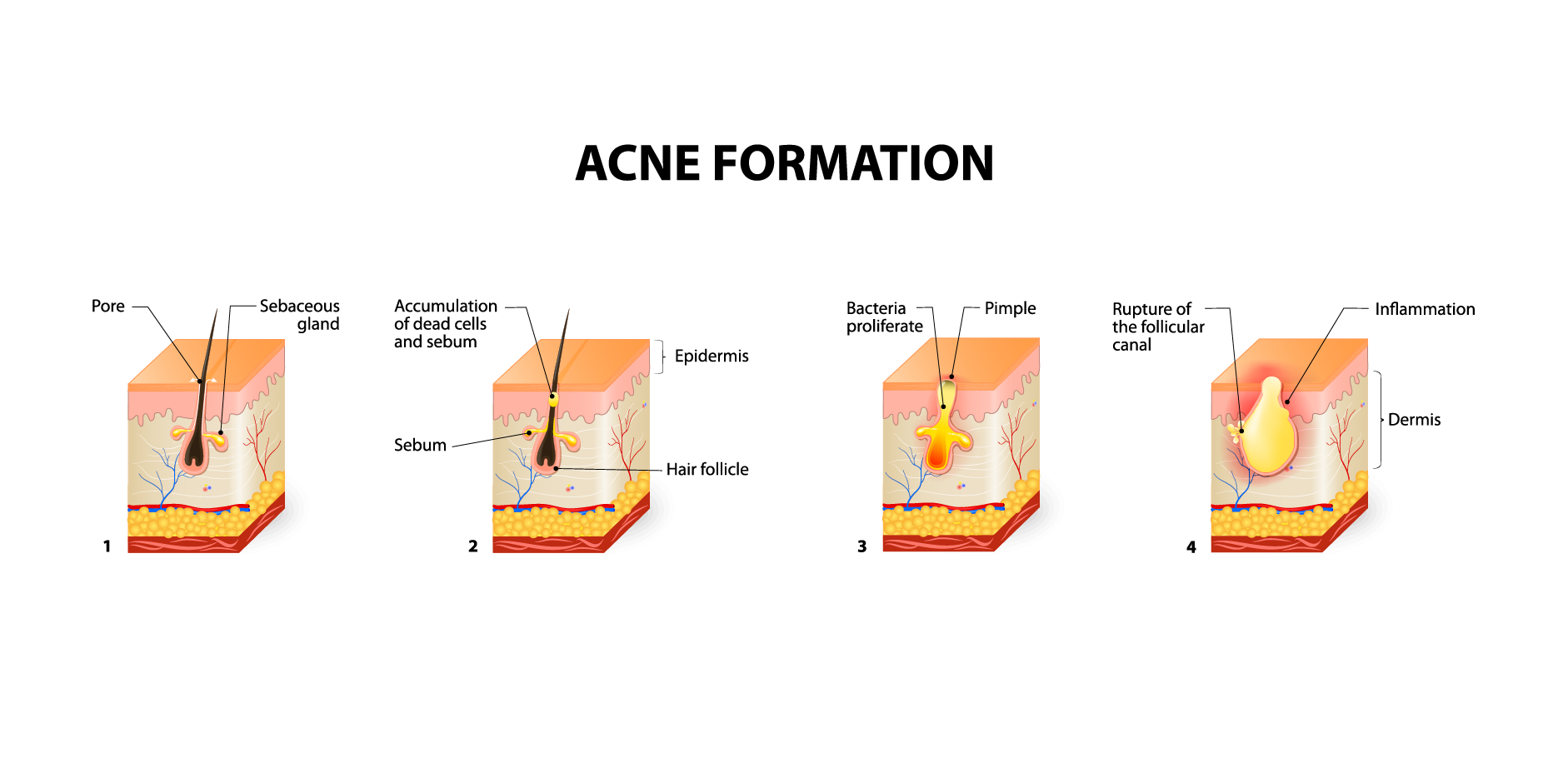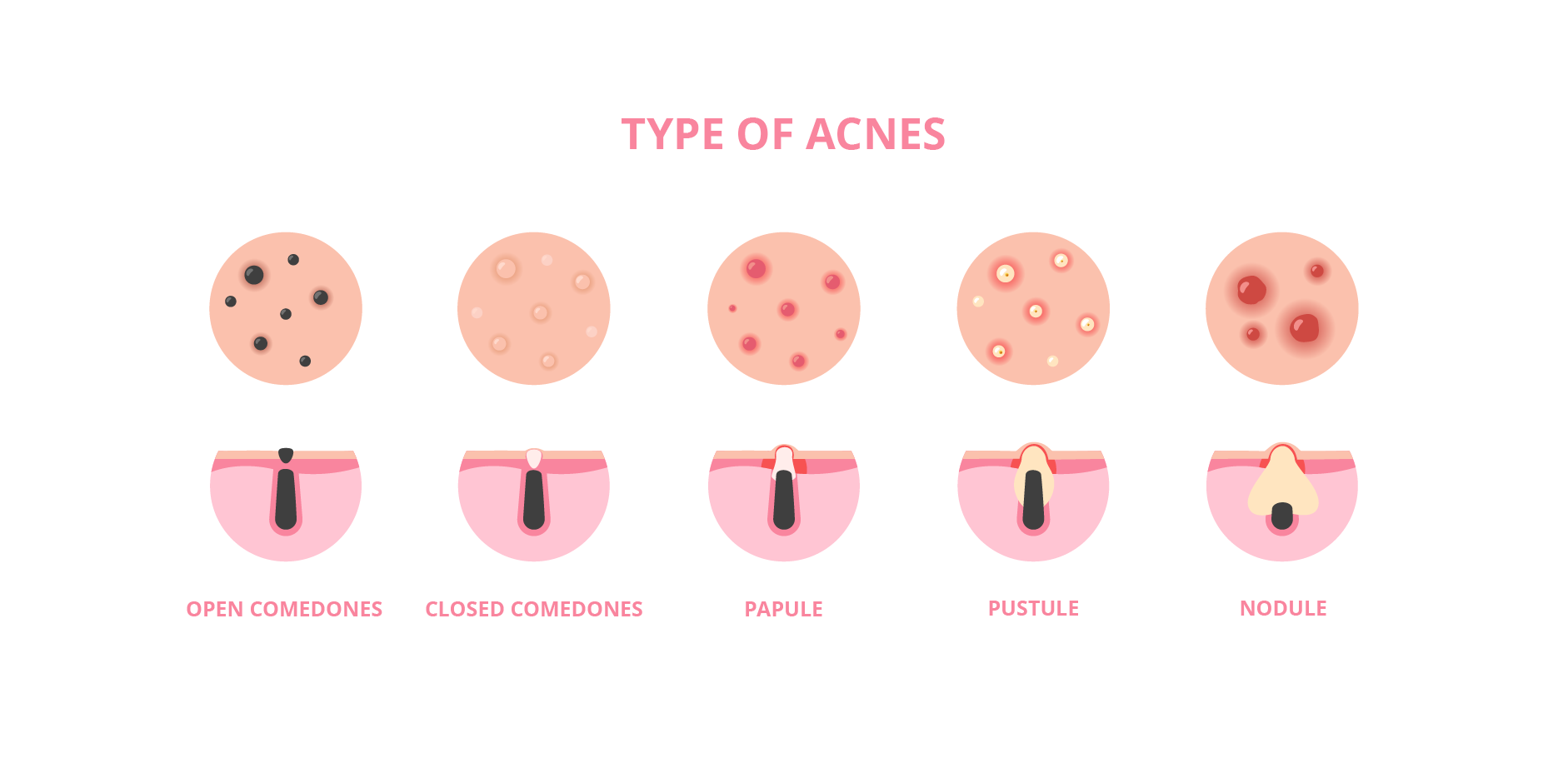Content:
Giới thiệu
Nội dung của trang này:
Giới thiệu
Dịch tễ học
Sinh lý bệnh
Các yếu tố nguy cơ
Phân loại
Nội dung của trang này:
Giới thiệu
Dịch tễ học
Sinh lý bệnh
Các yếu tố nguy cơ
Phân loại
Giới thiệu
Mụn trứng cá là bệnh lý viêm da mạn tính đặc trưng bởi nhân mụn mở và/hoặc đóng (mụn đầu đen và mụn đầu trắng) và các tổn thương viêm bao gồm mụn viêm, mụn mủ hoặc mụn bọc.
 Acne Vulgaris_Disease Background 1
Acne Vulgaris_Disease Background 1
 Acne Vulgaris_Disease Background 1
Acne Vulgaris_Disease Background 1Dịch tễ học
Vào năm 2024, một nghiên cứu toàn cầu về mụn trứng cá đã chứng minh tỷ lệ mắc bệnh chung là 20,5%, với tỷ lệ cao nhất được ghi nhận ở độ tuổi 16-24. Một nghiên cứu dựa trên dữ liệu thu nhập từ Nghiên cứu về Gánh nặng Bệnh tật Toàn cầu (Global Burden of Disease Study) năm 2021, được thực hiện từ năm 1990 đến 2021, về tỷ lệ mắc mụn trứng cá, tần suất và thời gian sống (năm) điều chỉnh theo bệnh tật đã kết luận có sự gia tăng về trường hợp mắc bệnh trên toàn thế giới trong ba thập kỷ qua, trung bình là 0,43% mỗi năm. Giới tính cũng giữ vai trò trong các báo cáo về tỷ lệ mắc mụn trứng cá, với phụ nữ trẻ có tỷ lệ mắc cao hơn 25% so với nam giới trẻ. Trong số các khu vực khác nhau, Tây Âu, khu vực có thu nhập cao ở châu Á Thái Bình Dương và Đông Á có tỷ lệ mắc bệnh chuẩn hóa theo tuổi cao nhất. Trong khi Trung Âu, châu Mỹ La-tinh nhiệt đới và Trung Á có tỷ lệ mắc bệnh chuẩn hóa theo độ tuổi thấp nhất. Tại Hoa Kỳ, đây là bệnh mạn tính về da phổ biến nhất với 50 triệu người bị ảnh hưởng.
Trong số các nước châu Á, một nghiên cứu trên cộng đồng cho thấy 88% bệnh nhân tuổi dậy thì từ 13 đến 19 tuổi ở Singapore bị mụn trứng cá. Trong các nhóm dân số với độ tuổi khác nhau ở Trung Quốc, tỷ lệ mắc mụn trứng cá dao động từ 51,3-62,7%, trong khi nhiều nghiên cứu khác nhau ở Malaysia cho thấy tỷ lệ mắc mụn trứng cá là 60-68%.
Trong số các nước châu Á, một nghiên cứu trên cộng đồng cho thấy 88% bệnh nhân tuổi dậy thì từ 13 đến 19 tuổi ở Singapore bị mụn trứng cá. Trong các nhóm dân số với độ tuổi khác nhau ở Trung Quốc, tỷ lệ mắc mụn trứng cá dao động từ 51,3-62,7%, trong khi nhiều nghiên cứu khác nhau ở Malaysia cho thấy tỷ lệ mắc mụn trứng cá là 60-68%.
Sinh lý bệnh
Mụn trứng cá liên quan đến tình trạng tăng sừng hóa nang lông, sự xâm nhập của vi khuẩn Cutibacterium acnes (tên gọi trước đây là Propionibacterium acnes), tiết bã nhờn, các cơ chế viêm phức tạp liên quan đến cả miễn dịch bẩm sinh và mắc phải, cơ chế thần kinh nội tiết, các yếu tố di truyền và không di truyền. Tăng tiết bã nhờn quá mức là do tăng androgen hoặc tăng độ nhạy cảm của tuyến bã nhờn với androgen. Tăng tiết quá mức bã nhờn kết hợp với quá trình sừng hóa nang lông bất thường dẫn đến tắc nghẽn các lỗ chân lông, từ đó dẫn đến hình thành các nhân mụn. Nhân mụn vỡ và các đáp ứng viêm đối với hiện tượng vỡ nhân mụn và C. acnes dẫn đến sự phát triển của các tổn thương viêm (như mụn viêm, mụn mủ, mụn bọc).
 Acne Vulgaris_Disease Background 2
Acne Vulgaris_Disease Background 2
 Acne Vulgaris_Disease Background 2
Acne Vulgaris_Disease Background 2Các yếu tố nguy cơ
Các yếu tố nguy cơ gây ra mụn trứng cá bao gồm quá trình phát triển của tuổi dậy thì, tiền sử gia đình mắc mụn trứng cá và loại da dầu. Mụn trứng cá ở tuổi dậy thì là do sự tăng mạnh hormone khi trẻ chuyển sang tuổi trưởng thành trong khi mụn trứng cá sau tuổi dậy thì do nhiều yếu tố góp phần.
Phân loại
Các loại tổn thương mụn trứng cá
 Acne Vulgaris_Disease Background 3
Acne Vulgaris_Disease Background 3
Vị trí phân bố
Tổn thương mụn trứng cá thường tập trung ở vùng trung tâm khuôn mặt như trán, mũi và cằm. Tuy nhiên, có thể ảnh hưởng đến các vùng khác có tuyến bã nhờn như mặt, tai, cổ, ngực, vai, lưng và da đầu.
- Nhân mụn (không viêm): Có thể là tổn thương đóng (mụn đầu trắng) hoặc mở (mụn đầu đen)
- Mụn viêm mủ (viêm)
- Mụn viêm: u nhỏ có đường kính <5 mm
- Mụn mủ: u nhỏ với lõi chứa mủ
- Mụn bọc (viêm):
- Dạng mụn trứng cá nặng, biểu hiện là các nốt và mụn mủ sâu có đường kính >5 mm
- Mụn bọc cục bộ là một dạng mụn bọc nặng, trong đó các tổn thương cứng chắc, viêm và đau, có kích thước >10 mm
 Acne Vulgaris_Disease Background 3
Acne Vulgaris_Disease Background 3Vị trí phân bố
Tổn thương mụn trứng cá thường tập trung ở vùng trung tâm khuôn mặt như trán, mũi và cằm. Tuy nhiên, có thể ảnh hưởng đến các vùng khác có tuyến bã nhờn như mặt, tai, cổ, ngực, vai, lưng và da đầu.
